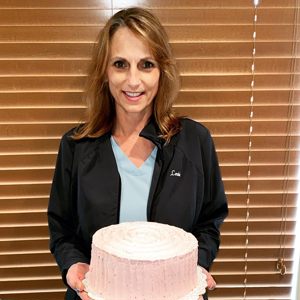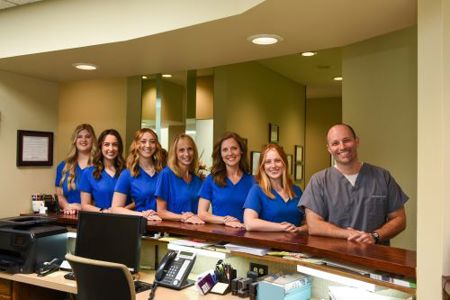Dental Sealants
Seal the deal on healthy smiles: Discover the lasting power of dental sealants at Melancon Family Dentistry!
Dental Sealants Help To Protect Your Teeth
You can rest assured if you need help avoiding tooth decay and cavities for you and your family, because Melancon Family Dentistry have the best cure. The solution is Dental Sealants.
Dental sealants provide a protective shield and acids against bacteria, food particles, plaque, and tartar. Within the grooves of your teeth, harmful bacteria can breed and cause decay, and dental sealants can be applied to prevent this decay from occurring. Dental sealants can also reduce the risk of developing other dental conditions since most dental issues usually stem from bacterial infections.
Dental sealants are produced from a thin plastic film and are either white or transparent. We will paint the sealant to avoid bacteria and food contaminants from penetrating the tiny grooves on the teeth where decay occurs in the tracks on the teeth.
Applying dental sealants is a quick, easy and painless procedure.
Removal of the tooth structure is not needed. Also, no shots, drilling, or anesthesia would be required.
We will clean your teeth and apply a special gel to the chewing surface for a couple of seconds before wiping it off and drying the tooth. The sealant can be painted directly on the tooth when it has dried. We use a curing light to harden the sealant, which takes about a minute.
For both children and adults, sealants will be applied to permanent teeth. Tooth decay begins early in life, making children and adolescents the ideal candidates for the treatment. Dentists regard dental sealants as a vital aspect of preventive dental treatment for children and teenagers.
We recommend sealants for the back teeth and the molars and premolars. Around the age of six, children usually grow their first molars, and the second starts to appear after the age of 12. Our recommendation is to seal these teeth before decay has the opportunity to breed.
A cost-effective solution that is both safe and painless and provides a line of protection against oral decay is to opt for sealants. It helps to protect your mouth and that of your family against bacteria. Dental sealants are long-lasting before they need to be applied again.
Even if you exercise oral hygiene effectively at home, you need to know that the toothbrush cannot penetrate food particles and plaque that may be found in the deep grooves. But with dental sealants, there would be no possibility for plaque and food particles to reach the region.
Note that the tooth is permanently damaged after decay has grown. Therefore, you should always look forward to adhering to a strict oral care program at home. The American Dental Association advises that at least 2-3 times a day, you clean your teeth, floss, get healthy meals, and keep away from sugar drinks.
If you want long-lasting protection from bacteria causing decay, please give us a call and inquire about dental sealants. We will be happy to assist you with your inquiry.
Sedation Dentistry
For your convenience, we offer these three types of comfort and sedation dentistry:
Nitrous Oxide
This “laughing gas,” as most people know it, is used for simple fillings or routine cleaning treatments and is the most common form of sedation. Thanks to this simple form of sedation, your entire dental treatment can be a relaxing experience.
Sedation By IV
During IV Sedation, the patient’s vital signs are monitored throughout the entirety of the procedure, as the sedation is administered via IV. The patient will have been sleeping during the entire process, in this case, and will awaken only after the procedure.
Suppose a patient must return to school or work after completing the procedure. In that case, it will be especially beneficial for them to understand their need for sufficient recovery time before they leave.
Conscience Oral Sedation
We currently offer oral sedation for our patients who wish to remain conscience and yet come to us with gagging problems or a higher than average amount of fear and anxiety. Throughout the entire procedure, we closely monitor their vital signs once giving a combination of oral medications.
Once taking the oral medication we provide, the patient becomes highly relaxed and drowsy, and after their appointment, most patients remember nothing of the fear or anxiety they may have thought to experience without.
You will not be put to sleep with oral sedation, and during the entire procedure, you will be able to respond to Dr. Melancon and his team.
Specials
In Pain?
Patients who self-pay and contact us due to pain, such as those requiring root canal treatment, fillings, or crowns, will incur a $75 charge for their appointment. This fee encompasses the examination and x-ray essential for diagnosis. Excludes patients with dental insurance.
Need a Cleaning?
New patients, paying out of pocket, who schedule a cleaning will be charged $175 for a basic cleaning. This fee covers an examination, two sets of x-rays, and a regular cleaning. Excludes deep cleaning procedures and patients with insurance.
Need an Extraction?
New patients, paying out of pocket, requiring an extraction will incur a charge of $205. This includes the cost of X-rays, an examination, and the extraction procedure itself. Excludes patients with insurance.
© Melancon Family Dentistry 2025 | Sitemap
Medical Website Designed & Developed by













